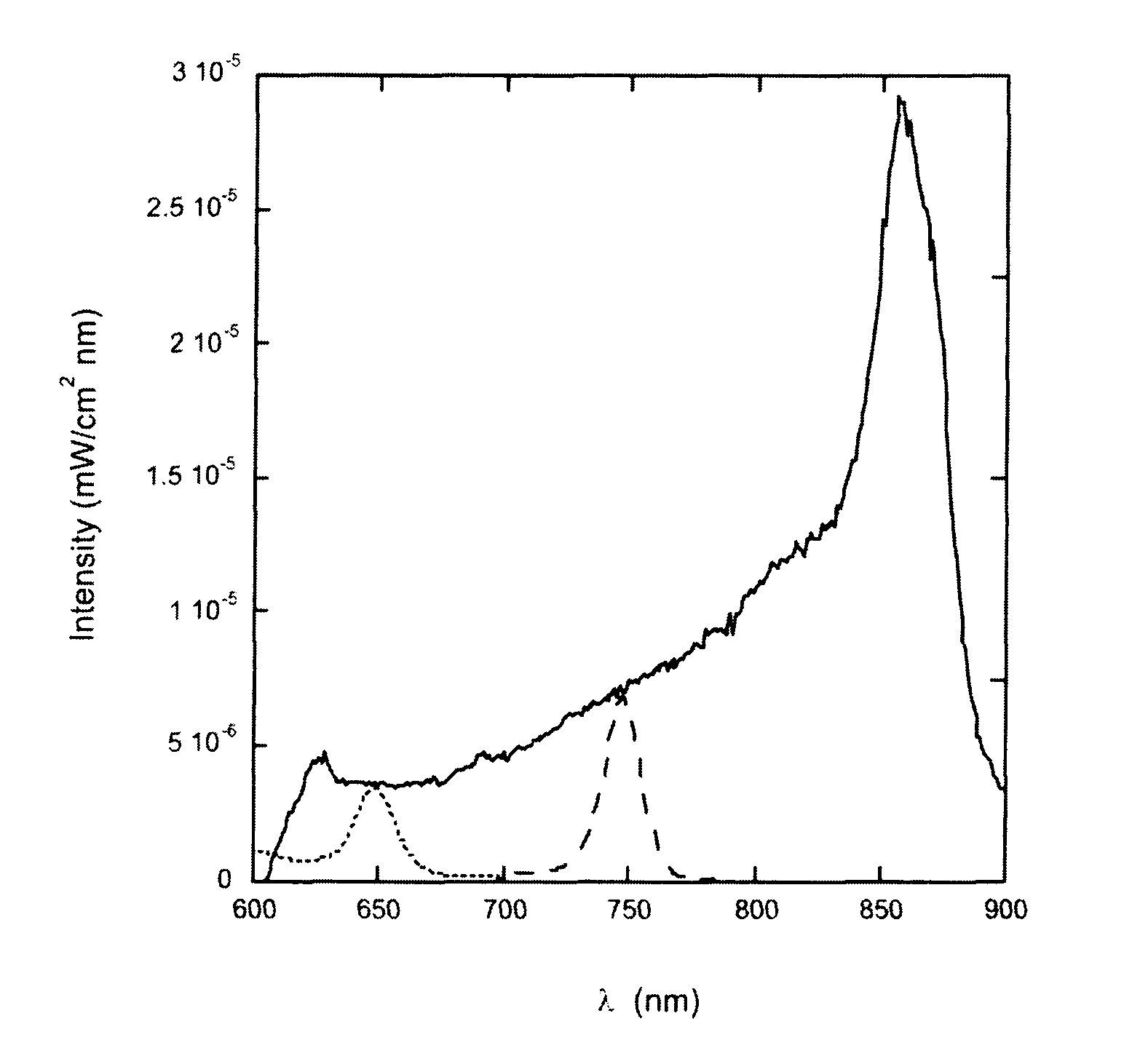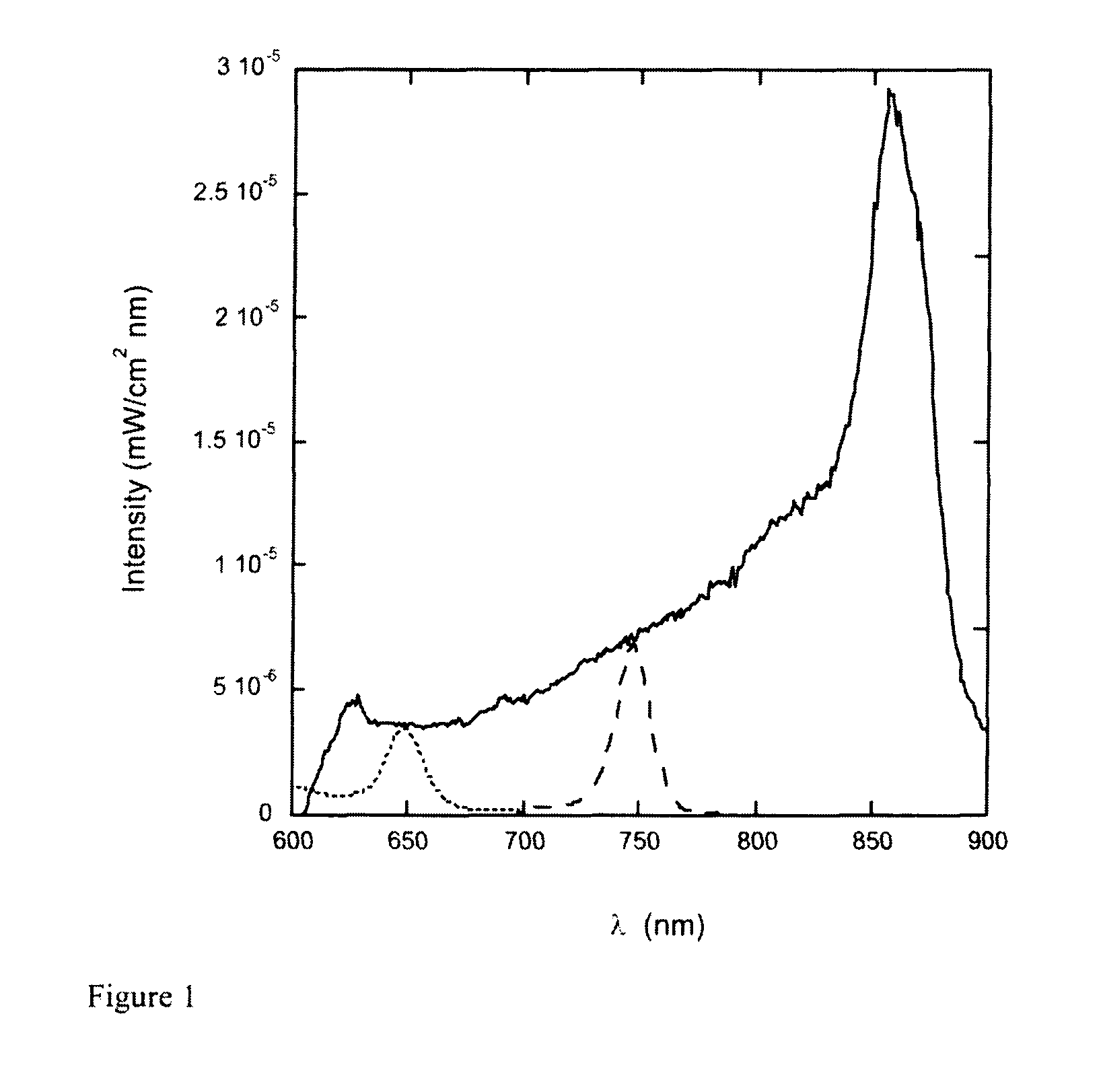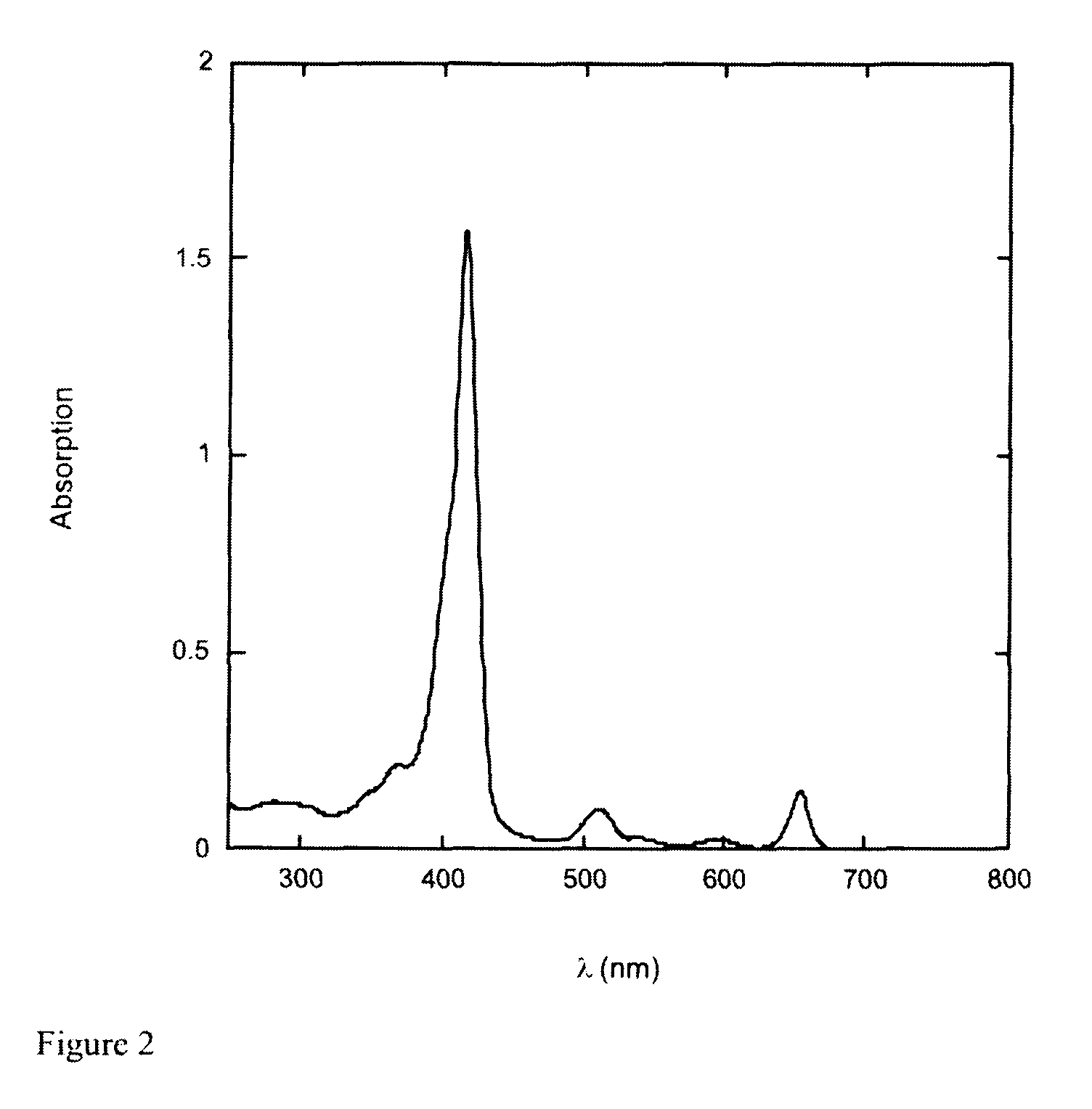Process for preparing chlorins and their pharmaceutical uses
a technology of chlorinated chlorins and chlorinated bacterioclorins, which is applied in the field of preparation, properties, pharmaceutical compositions and use in therapy of sulfonated chlorins and bacterioclorins, can solve the problems of limited synthesis of stable bacteriochlorins with this approach, tissue energy emission, and insufficient scientific literatur
- Summary
- Abstract
- Description
- Claims
- Application Information
AI Technical Summary
Benefits of technology
Problems solved by technology
Method used
Image
Examples
example 1
Solid State Synthetic Procedure for Bacteriochlorins with Electron-Withdrawing Substituents
[0165]This example illustrates the wide range of bacteriochlorins that can be synthesized by a procedure characterized by the absence of solvent and base, hence where only a porphyrin and a hydrazide (both in the solid state) are employed as starting materials.
[0166]In one preparation we mixed 60 mg (6.8×10−5 mol) of 5,10,15,20-tetrakis(2-trifluoromethylphenyl)porphyrin with 500 mg (2.7×10−3 mol) of p-toluenesulphonylhydrazide, both in very fine powders. They were added to a reactor, which was evacuated, sealed under N2 and heated to a temperature higher than 100° C. for several minutes. After cooling (room temperature) the solid was removed and several portions of p-toluenesulphonylhydrazide 250 mg (1.4×10−3 mol) were added, until complete disappearance of the porphyrin Soret band. The bacteriochlorin was extracted with a small amount of organic solvent. The excess of hydrazide was removed by...
example 2
Solid State Synthetic Procedure for Halogenated Chlorins
[0168]In one preparation of 5,10,15,20-tetrakis(2-fluorophenyl-5-N-methylsulfamoylphenyl) chlorin, Luzitin-FMet-c, we mixed 50 mg (4.72×10−5 mol) of 5,10,15,20-tetrakis(2-fluorophenyl-5-N-methylsulfamoylphenyl)porphyrin with 18 mg (9.44×10−5 mol) of p-toluenesulphonylhydrazide. The reactor is evacuated, sealed under N2 and is heated at a temperature higher than 100° C. for several minutes. After cooling (room temperature) the solid was removed with a small amount of organic solvent, and the excess of hydrazide was removed by a short filtration on silica gel using ethylacetate / hexane as elutant. A mixture of chlorin contaminated with approximately 10% of bacteriochlorin was obtained. The mixture of chlorin and bacteriochlorin was dissolved in dichloromethane and oxidized to the corresponding chlorin by heating at 50° C. in the presence of air.
[0169]After recrystallization from diethyl ether / pentane 90% of Luzitin-FMet-c was obta...
example 3
Solid State Synthetic Procedure for Halogenated Bacteriochlorins
[0170]This example describes a clean, simple, economical and environmentally-benign synthetic method, involving a solvent-free one-pot synthesis of halogenated amphiphilic bacteriochlorins.
[0171]The appropriate porphyrin (solid) and the p-toluenesulphonylhydrazide (solid) are ground into very fine powders and thoroughly mixed. Next they are introduced into a reactor and evacuated to high vacuum. The reactor is then sealed and kept under vacuum, or repeatedly washed with an inert gas. Finally, the reactor is heated (70-200° C.) during 1-340 min, while sealed. Once the reaction is completed and the reactor brought to room temperature, the corresponding bacteriochlorin is obtained with 90% yield. After a short filtration by silica gel column, a bacteriochlorin with a contamination of less than 5% of the corresponding chlorin is obtained.
[0172]In one preparation of 5,10,15,20-tetrakis(2,6-dichloro-3-N-ethylsulfamoylphenyl)b...
PUM
| Property | Measurement | Unit |
|---|---|---|
| Molar density | aaaaa | aaaaa |
| Time | aaaaa | aaaaa |
| Time | aaaaa | aaaaa |
Abstract
Description
Claims
Application Information
 Login to View More
Login to View More - R&D
- Intellectual Property
- Life Sciences
- Materials
- Tech Scout
- Unparalleled Data Quality
- Higher Quality Content
- 60% Fewer Hallucinations
Browse by: Latest US Patents, China's latest patents, Technical Efficacy Thesaurus, Application Domain, Technology Topic, Popular Technical Reports.
© 2025 PatSnap. All rights reserved.Legal|Privacy policy|Modern Slavery Act Transparency Statement|Sitemap|About US| Contact US: help@patsnap.com



